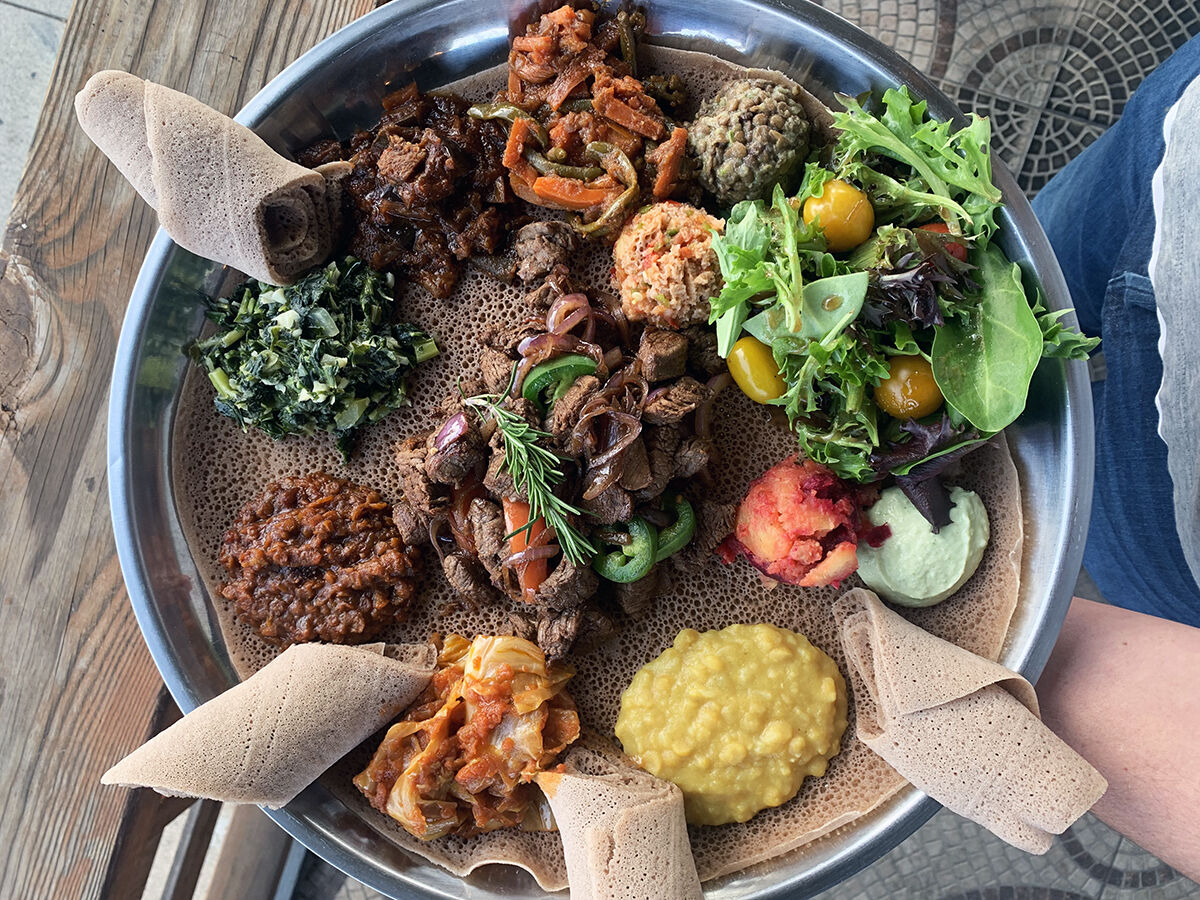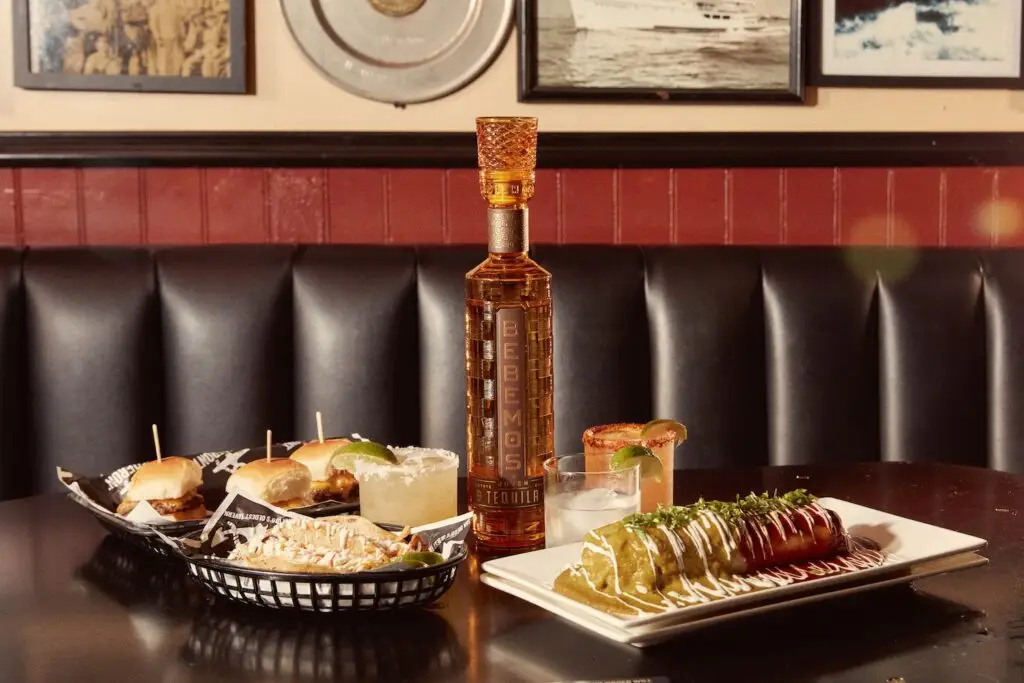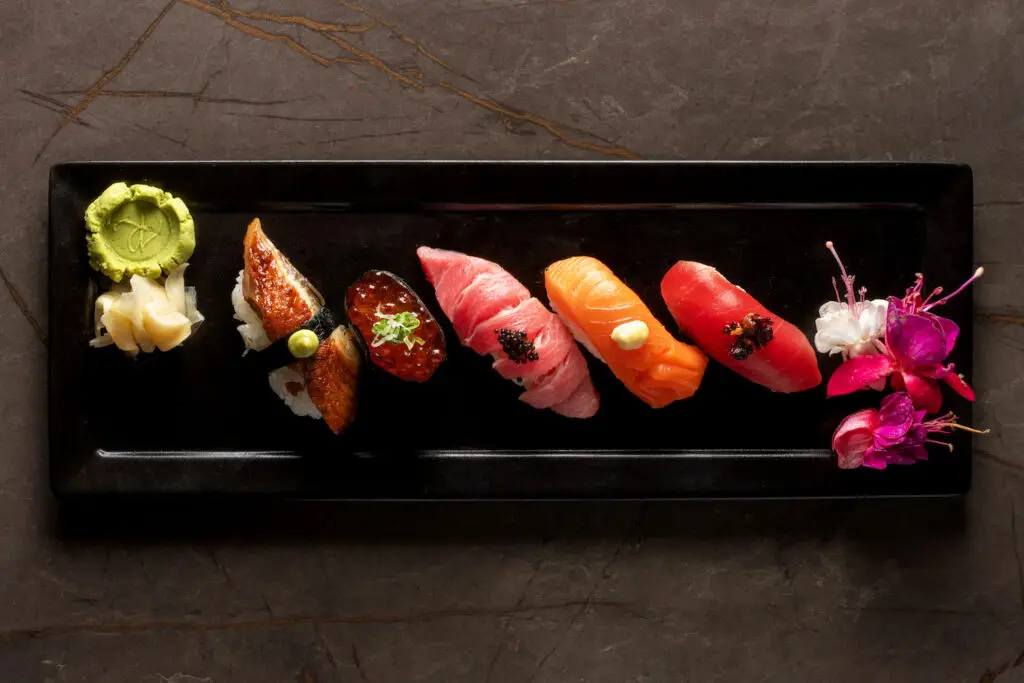Every busy part of the city has pockets of retreat. Sanity getaways. Nestled between an auto parts shop and an oil change depot, Gihon Ethiopian Kitchen is that charming break in commerce along El Cajon Boulevard. With a shade tree and a modest front porch dangled with bistro lights, this is where Ethiopian-born Meskerem “Messi” Bekele has expressed her culture through food and family for 23 years.
“It used to be a hamburger place that was really popular,” says her daughter and co-owner, Lela Makonnen. “The owners asked my mom to continue selling burgers and just add Ethiopian cuisine. She had no idea how to make fries and shakes. Eventually, the Ethiopian food took off and we stopped doing burgers.”
I ask her what to order. She says the tibs (stewed meat with caramelized onions) and the vegan plate. A pile of succulent beef arrives on a gigantic round of injera (a spongy flatbread), flanked by mounds of hypercolor side dishes—roasted eggplant in berbere sauce, stewed lentils, split peas, spiced cabbage and potatoes, green beans and carrots, sautéed collard greens, and one of the most delicious garlic-tofu spreads I’ve ever tasted. No utensils. You usually pinch pieces off a separate roll of injera and grab a bite of each food until you’re eventually left with the injera underneath that has soaked up all the flavors.
Since my post last week on Ethiopian food, a few readers have asked about the basics of the cuisine. I turned to Makonnen for a primer:
Injera
“It’s the main base of our cuisine—what a tortilla is to Mexican food, or rice is to Asian cuisine. It’s made with teff, a grain. It became a superfood when people found out about all the nutrients in it and that it’s naturally gluten-free. We ferment our injera for 48 hours. That’s where the tanginess comes from. The injera on the prelined platter is soaking up all the flavor. We start by eating on the platter, and then once you’re finished with that, use the extra rolls of injera on the side.”
Gursha
“This is an act of friendship and showing your love for the person you’re dining with. You prepare a bite with injera and feed the other person. Some Ethiopian customers, once their food has arrived at the table, they want to give the first bite to the server. I remember being totally confused and freaked out by this when I was younger. But it’s really really rude to decline a gursha. And if you take one, you have to take two. That’s what we do. I can recall I’d be hanging with my grandmother—she’d rarely enjoy the food herself because she’s just giving gursha.”
Berbere
“It is everything—a spice mixture you can sprinkle on potatoes, chicken, everything. Every household has their own variation. But it’s mostly chile peppers, dried garlic, ginger, Ethiopian cardamom, nutmeg, fenugreek, cumin—about 12 to 15 different spices. We cook it for hours just to get rid of the heat and get the flavor intensified with sautéed onions.”
Niter kibbeh
“It’s basically a clarified butter, or a spiced ghee. A key ingredient in any dish that has meat. You completely melt unsalted butter, skim the milk solids off the top. We normally add Ethiopian cardamom, koseret (an Ethiopian spice), cardamom, Ethiopian holy basil. You toast it a bit, grind it really fine, then steep it in the butter. It should just be flavorful, not spicy.”
Mitmita
“A super spicy spice mix. Ground African bird’s-eye chile peppers, add cloves, Ethiopian cardamom, Ethiopian black pepper. Some people might add cinnamon or dried ginger and garlic. Ethiopian food has a raw beef tartare [called kifto] that uses this.”
Mekelesha
“A finishing spice mixture. If a dish has berbere like the red lentils or doro wot—right before you serve that, you add mekelesha. The spice blend varies, but key ones are black cardamom, cumin, cloves, cinnamon, and long black pepper.”
Gebeta
“It’s a traditional seating that we use with really small chairs, a round woven Ethiopian basket. The big circular platter of food is placed on it.”

PARTNER CONTENT
Ethiopian Food / Platter


















